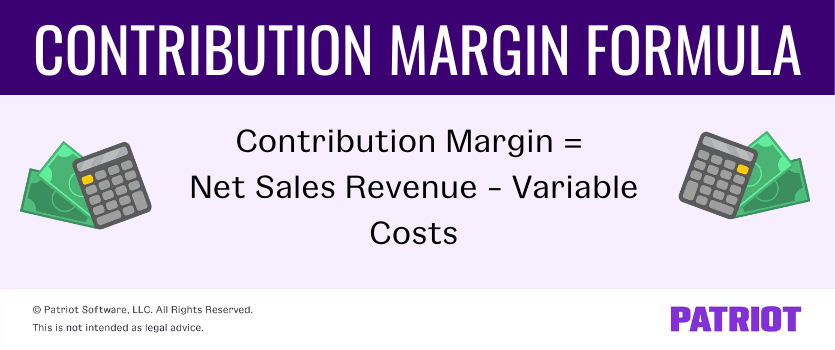Want to find a certain product or service’s profitability? Of course you do! To determine how profitable your offerings are and what kind of adjustments your business needs to make to increase earnings, learn how to calculate contribution margin.
Contribution margin definition
What is contribution margin? Your business’s contribution margin is the amount of money left over after deducting variable costs from revenue to cover the fixed costs of your business. After you cover fixed costs, the remaining contribution margin amount is considered earnings.
So, what’s the difference between fixed vs. variable costs? Variable costs can vary based on your sales activity, such as direct materials and labor. On the other hand, fixed costs remain the same regardless of sales (e.g., rent, insurance, etc.).
Determining your business’s contribution margin can help you in a number of ways. You can use your contribution margin to:
- Decide how to price a product or service
- See which offerings are more profitable
- Determine which products or services to keep or get rid of
- Find your breakeven point
In short, you can use your contribution margin to help perfect your pricing strategy and see which products and services bring in the most revenue.
Gross margin vs. contribution margin
If you know gross margin, you may be wondering how the two margins differ. Let’s break it down, shall we?
Gross margin is the amount of revenue left over after you subtract cost of goods sold. Cost of goods sold excludes indirect costs and operating expenses (e.g., sales and marketing costs). Your gross margin only includes revenue and direct production costs.
So, how do they differ? Gross margin shows the profitability of your entire business. On the other hand, contribution margin can show the profitability of one individual product or service.
Contribution margin formula
Again, contribution margin is the difference between the revenue of a product or service and the variable costs associated with its production and sales process.
To find your contribution margin, use the following formula:
Contribution Margin = Net Sales Revenue − Variable Costs
You can also find your contribution margin by adding together fixed costs and net income.
Businesses can use their contribution margin amount or ratio to find their margin for:
- The company as a whole
- A product line
- An individual unit of a product or service
Contribution margin ratio
Your margin can be expressed as a dollar amount or percentage. To find the contribution margin percentage, use this formula:
Contribution Margin Ratio = (Sales Revenue – Variable Costs) / Sales Revenue
Your ratio measures the same thing as your standard contribution margin, just at a different level.

What is a good contribution margin?
When it comes to your margin percentage or ratio, the closer you are to 100%, the better.
A higher margin or ratio means your business has more money available to cover overhead costs and other expenses. And therefore, has more revenue.
A low or negative margin or ratio generally indicates your business or certain product or product line is not very profitable. If your margin or ratio is low, consider making some adjustments to increase profitability (e.g., getting rid of a product, increasing pricing, etc.).
You can use your margin for each product or service to determine which offerings are the most profitable and worth producing (aka have a higher margin).
How to calculate contribution margin
For the calculation for contribution margin, you need to know the formula (hint: look above) and gather some information, including your:
- Net sales
- Total variable costs
To determine your net sales revenue, use the formula below:
Net Sales = Gross Sales – Returns – Allowances – Discounts
To find your total variable costs, add together the expenses associated with producing the goods or services. Variable costs can include direct materials, direct labor, transportation, commissions, and production supplies.
Once you gather the above metrics, plug them into the formula to calculate your business’s total contribution margin. You can also use the same information to find your ratio.
Contribution margin example
Say your business has a net sales revenue of $100,000 and your variable costs are $20,000. Plug your totals into the formula to find your contribution margin:
Contribution Margin = $100,000 – $20,000
Your contribution margin for your product line is $80,000 for the period.
Want to find your contribution margin ratio instead? Use the same totals and input them into the contribution margin ratio formula:
Contribution Margin Ratio = (Sales Revenue – Variable Costs) / Sales Revenue
Contribution Margin Ratio = ($100,000 – $20,000) / $100,000
Your contribution margin ratio is 0.8 or 80%.
This is not intended as legal advice; for more information, please click here.



